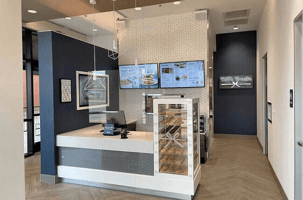In educational settings, durability is more than just a feature; it's crucial. Schools and training centers are active places, exposed to the daily wear and tear that comes from nurturing curious minds. Educators and designers are increasingly using custom-designed millwork to create spaces that not only endure but also change with educational needs.
The Foundation of Durability: High-Quality Millwork
Educational spaces are largely built on the foundation of custom millwork, which involves crafting furniture and fixtures with specific designs. Here’s how quality millwork contributes to the longevity and adaptability of these environments:
Tailored to Withstand the Test of Time
Educational millwork is designed to endure the rigorous demands of daily use, including the opening and closing of storage cabinets and the inevitable bumps and scrapes of classroom activity. Using high-quality materials and finishes, millwork can be not only durable but also visually appealing. Some durable materials include high pressure laminate, solid surfaces, engineered stone, and stainless steel.
Flexibility for Future Needs
The flexible nature of millwork in educational and training environments allows for the modification of modular components as teaching methods and classroom requirements change over time. Millwork is a cost-effective investment for schools investing in their future as it allows educational spaces to adapt without the need for complete renovations.
Environmental Sustainability
Creating durable educational spaces involves adopting sustainable manufacturing practices. The millwork can employ materials that are both durable and environmentally friendly.
Balancing Aesthetics and Functionality
Designing educational environments is not just about making them durable, but also about creating visually appealing and engaging environments that promote learning. Here’s how the right balance can be struck:
Enduring Beauty
Durable materials do not have to be stark or industrial. The development of millwork has enabled the creation of educational areas that are both practical, as well as beautiful and inspiring. Millwork can add to the warmth and texture of a classroom or training space, as well as creating an atmosphere that fosters learning and creativity.
Maintenance and Upkeep
Designing educational facilities to be maintenance-free is a crucial aspect. With the inclusion of a durable and easy-to–clean finish, custom millwork can be produced with minimal upkeep cost. Year after year, this pragmatic approach ensures that educational settings remain as beautiful as they were before.
Conclusion
Educational and training facilities are need to be enduring, flexible, and visually pleasing. At the intersection of these needs is custom-made millwork, which not only provides solutions to meet the demands of educational environments, but also enables it to adapt to future changes. The design and construction of educational and training spaces should be durable, enabling them to provide support for future generations of students in environments that are as resilient as they are inspiring.






.png?width=203&height=142&name=IFA%20Member%20Logo%20EPS%20(1).png)
.png%20for%20web.png?width=203&height=94&name=2022_VetFran_Logo%20(002).png%20for%20web.png)
.png?width=203&height=150&name=ICSC-logo-tag-full-color%20(1).png)